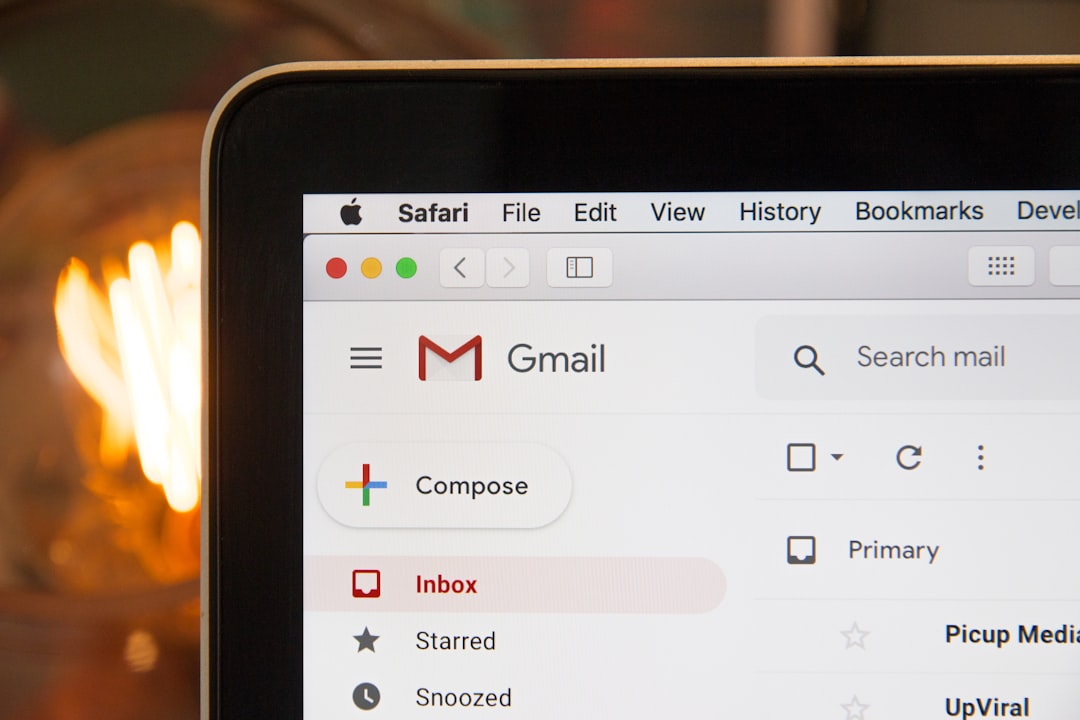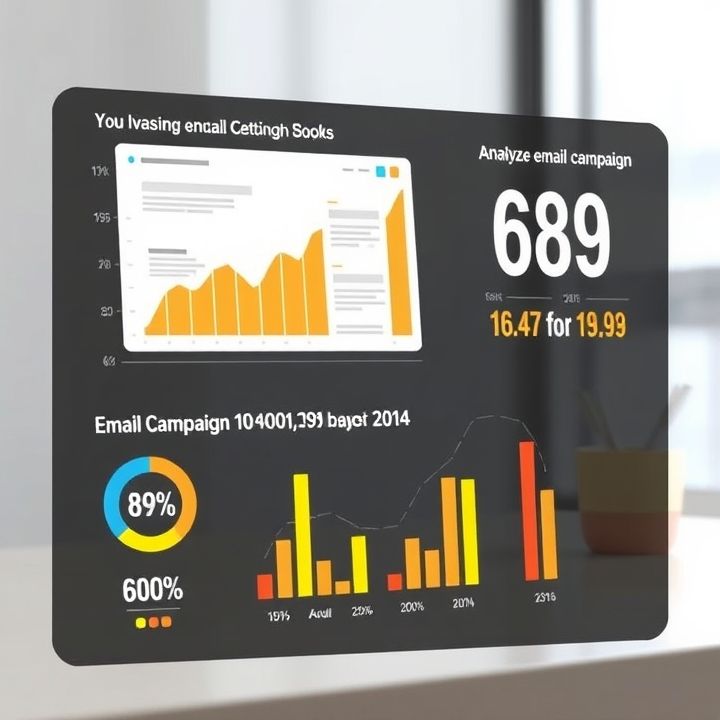Table of Contents
- Introduction
- Identifying inactive or disengaged subscribers
- The importance of regular email list cleaning
- Techniques for segmenting your email list
- Strategies for re-engaging inactive subscribers
- Using automation to manage email list hygiene
- Best practices for unsubscribing and sunsetting
- The role of content quality in subscriber engagement
- Metrics to track for effective email list management
- Conclusion
- Frequently Asked Questions
Introduction
Email marketing is one of the most powerful tools at your disposal, but it’s only as effective as the quality of your email list. Imagine having a large list of subscribers, but only a handful are actively engaging with your content. Frustrating, right?
That’s where our guide, “Unlock Huge Email Success: The Ultimate Guide to Cleaning Your List and Reviving Inactive Subscribers!”, comes in. This article will walk you through the essential steps to rejuvenate your email list and transform inactive subscribers into active participants.
Before diving into the details, take a look at the benefits of cleaning your email list:
| Benefit | Description |
|---|---|
| Higher Engagement | Improves open and click-through rates |
| Cost Efficiency | Saves money on email marketing services |
| Better Deliverability | Prevents emails from landing in spam folders |
Read on to discover the ultimate strategies for achieving email marketing success!
Identifying inactive or disengaged subscribers
Identifying inactive or disengaged subscribers is crucial for maintaining a healthy email list. The first step involves tracking engagement metrics such as open rates, click-through rates, and responses to the emails. Subscribers who have not opened your emails for a specified period, often three to six months, can be classified as inactive.
Another approach is to monitor click-through behavior. If subscribers are opening emails but not clicking on any links, they may be disengaged. Additionally, analyzing unsubscribes, spam complaints, and bounce rates provides insights into those who are no longer interested in your content.
Utilizing email marketing software with sophisticated tracking features can automate this process, allowing you to segment your email list based on activity levels.
Sending a re-engagement campaign to these inactive subscribers can help determine if they are interested in remaining on your list. If there is still no engagement, it may be time to remove them to keep your email list clean and focused on active subscribers.
The importance of regular email list cleaning
Regular email list cleaning is crucial for maintaining the efficiency and effectiveness of your email marketing efforts. Over time, email lists can become cluttered with inactive or disengaged subscribers, which can negatively impact your email deliverability rates and overall campaign performance. By regularly cleaning your email list, you can ensure that you are only targeting subscribers who are genuinely interested in your content, thereby increasing your open rates and click-through rates.
Additionally, a cleaner email list helps in reducing the chances of your emails being marked as spam, which can further protect your sender reputation. Email service providers often penalize accounts that frequently send to invalid or inactive addresses. By removing these addresses, you not only save on costs associated with sending large volumes of emails but also improve the overall health of your email list.
In conclusion, while it may seem counterintuitive to remove subscribers from your list, the strategic elimination of inactive or disengaged subscribers can lead to a more engaged audience and more successful email marketing campaigns. Maintaining a healthy email list is essential for long-term success in email marketing.
Techniques for segmenting your email list
Effective email list segmentation can significantly improve engagement rates and drive conversions. One crucial technique is to segment based on demographics, such as age, location, and gender, which allows for more targeted messaging. Another powerful method is using behavioral data—examining how subscribers interact with your content or products. This can include tracking website visits, previous purchases, or email open and click-through rates.
Segmentation by interest is another effective strategy. Surveys and preference centers can help you gather data on what topics or products each subscriber is most interested in. Similarly, segmenting based on engagement levels can help you identify active subscribers versus those who are less engaged, enabling you to tailor your content accordingly.
Finally, consider using transactional data to create segments. For example, you could divide your list into high-value customers and those who haven’t purchased in a while. By implementing these segmentation techniques, you can send more personalized and relevant emails, thereby enhancing your overall email marketing performance.
Strategies for re-engaging inactive subscribers
Re-engaging inactive subscribers is crucial for maintaining a healthy email list and improving your open rates and engagement. One effective strategy is to send a personalized re-engagement campaign. This could include a special offer, personalized content, or a simple message asking if they still want to receive your emails. Using a compelling subject line can grab their attention and encourage them to open the email.
Another strategy is to segment your email list and target inactive subscribers with tailored content that addresses their preferences. By analyzing their past interactions, you can provide content that is more likely to interest them. Offering an incentive, such as a discount or exclusive content, can also motivate them to re-engage.
It’s also valuable to give subscribers an easy way to update their preferences and choose how often they hear from you. This can reduce the likelihood of them becoming inactive in the first place. Finally, it’s important to regularly clean your list by removing subscribers who remain unresponsive after multiple attempts to re-engage. This will help improve your email deliverability and overall campaign performance.
Using automation to manage email list hygiene
Automation is a powerful tool for maintaining email list hygiene and managing inactive or disengaged subscribers. Automated systems can help you identify and segment subscribers who haven’t interacted with your emails over a certain period. This allows you to implement re-engagement campaigns to win them back or clean up your list if they remain inactive.
Using automated workflows, you can set up triggers that send a series of targeted emails aimed at re-engaging inactive subscribers. For instance, you can send a sequence of emails offering exclusive content, special discounts, or simply reminding them of the value they will miss. If these attempts are unsuccessful, automation can help you seamlessly move these subscribers to a different list or remove them entirely.
Email automation platforms often come with built-in analytics tools that allow you to monitor the effectiveness of your campaigns. By analyzing this data, you can fine-tune your strategies for better results. Additionally, automation ensures that your email list stays clean and engaged without requiring constant manual intervention, saving you valuable time and resources.
Best practices for unsubscribing and sunsetting
Maintaining a clean email list is essential for effective communication and engagement. One of the best practices for managing inactive or disengaged subscribers is to implement a clear **unsubscribe** policy. Ensure that the **unsubscribe link** is easily accessible in every email. This not only complies with regulations but also helps keep your list healthy.
Another key strategy is to use a **sunsetting** policy. This involves identifying subscribers who have not engaged with your emails over a specific period and gradually phasing them out. Start by sending a **re-engagement campaign** to win back their interest. If there is still no engagement, move them to a **suppression list** before ultimately removing them.
It’s also beneficial to segment your email list based on **engagement levels**. This allows you to tailor your content to different subscriber segments effectively, keeping your list more engaged and responsive. Regularly monitor your **email analytics** to identify patterns of inactivity and take appropriate actions promptly.
Overall, regularly cleaning your email list improves **deliverability** rates and ensures that your emails reach those who are genuinely interested, enhancing the overall effectiveness of your email marketing efforts.
The role of content quality in subscriber engagement
The role of content quality in subscriber engagement cannot be overstated. High-quality content is essential for capturing and retaining the attention of your audience. It serves as the cornerstone of successful email marketing campaigns, helping to convert readers into loyal customers. When subscribers find your content valuable, they are more likely to remain engaged and interact with your emails. Providing relevant information, unique insights, and actionable tips can make your emails a must-read for your audience.
Moreover, content that resonates with your readers encourages them to share it, thereby broadening your reach and potentially increasing your subscriber base. On the other hand, low-quality or irrelevant content can lead to decreased engagement and higher unsubscribe rates. It is crucial to regularly assess the performance of your content through metrics such as open rates, click-through rates, and subscriber feedback.
In summary, focusing on high-quality content not only engages your current subscribers but also attracts new ones, supporting the overall health of your email list and ensuring long-term success.
Metrics to track for effective email list management
Tracking the right metrics is essential for effective email list management. One key metric is the open rate, which tells you how many recipients are opening your emails. A low open rate might indicate that your subject lines need improvement or that your content is not resonating with your audience.
Another important metric is the click-through rate (CTR). This shows how many people clicked on a link within your email, providing insight into the effectiveness of your calls-to-action and the overall engagement level of your subscribers.
The bounce rate is also crucial to monitor. High bounce rates can harm your sender reputation and indicate issues with your email list hygiene, such as outdated or incorrectly entered email addresses. Additionally, keeping an eye on the unsubscribe rate helps you understand if your content or frequency is driving people away.
Lastly, the conversion rate helps measure the actual effectiveness of your email campaigns by showing how many recipients took the desired action, whether it’s making a purchase, filling out a form, or downloading a resource. By regularly monitoring these metrics, you can make informed decisions to improve your email list management and overall campaign success.
Conclusion
Cleaning your email list and re-engaging inactive subscribers are essential steps for achieving email marketing success. By regularly identifying and removing disengaged subscribers, you can maintain a healthy and active email list, ensuring your messages reach those who are genuinely interested. Employing automation and following the best practices for unsubscribing and sunsetting can save you time and resources while improving your email deliverability rates.
Equally important is the quality of your content. High-quality and relevant emails keep your audience engaged and less likely to unsubscribe. Regularly monitoring key metrics such as open rates, click-through rates, and conversion rates enables you to make informed decisions and optimize your email campaigns for better performance.
In summary, consistent email list maintenance, strategic re-engagement tactics, and a focus on delivering valuable content are indispensable for long-term success in email marketing. Implement these practices to unlock significant improvements in your email campaign outcomes and build a more engaged and responsive subscriber base.

